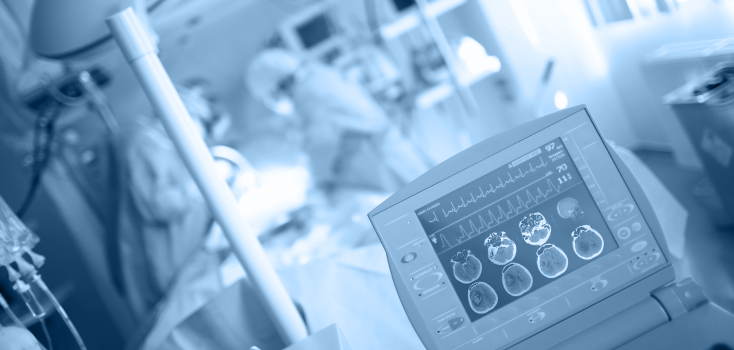
Stroke: Special rescue vehicles improve acute care
The acute care of stroke could be further optimised – with special rescue vehicles.
In a stroke, a blood clot reduces the blood flow to an area of the brain. The lack of oxygen must be remedied as soon as possible after the onset of symptoms, otherwise the patient is threatened with massive permanent disability or even death. The earlier the blood clot is dissolved by thrombolysis, the better the chances of avoiding permanent damage.
A research team in Germany has therefore investigated whether the care of stroke patients in specialised ambulances – so-called Mobile Stroke Units (in Berlin “Stroke Einsatz-Mobile”, “STEMO”) – can be effective directly at the scene of the incident. The Mobile Stroke Units are equipped with a computer tomograph, a mini-laboratory and a neurologist, who is also trained as an emergency physician, technically and personally for the diagnosis and treatment of stroke patients.
If more specially equipped ambulances – so-called Mobile Stroke Units (MSUs) – were used, the treatment results could be improved considerably. According to a recent study, patients who were treated in these technically and personally specially equipped emergency vehicles directly after a stroke suffered significantly fewer deaths and disabilities than patients who received treatment in hospital: Among the 749 patients treated in mobile stroke units, the probability of death or disability after a stroke was 26 percent lower than among the 794 patients treated in hospital. In addition, 60 percent of the patients treated in the special ambulances were able to receive prehospital thrombolysis with alteplase, a drug used to dissolve a blood clot. Among the stroke patients who were first treated in hospital, only 48 percent received this treatment. Another advantage: the time to first treatment was 20 minutes shorter for patients treated in mobile stroke units.
For future tests, their use should also be evaluated, especially in suburban or rural areas, as stroke units are often far away and every minute counts in stroke treatment.

